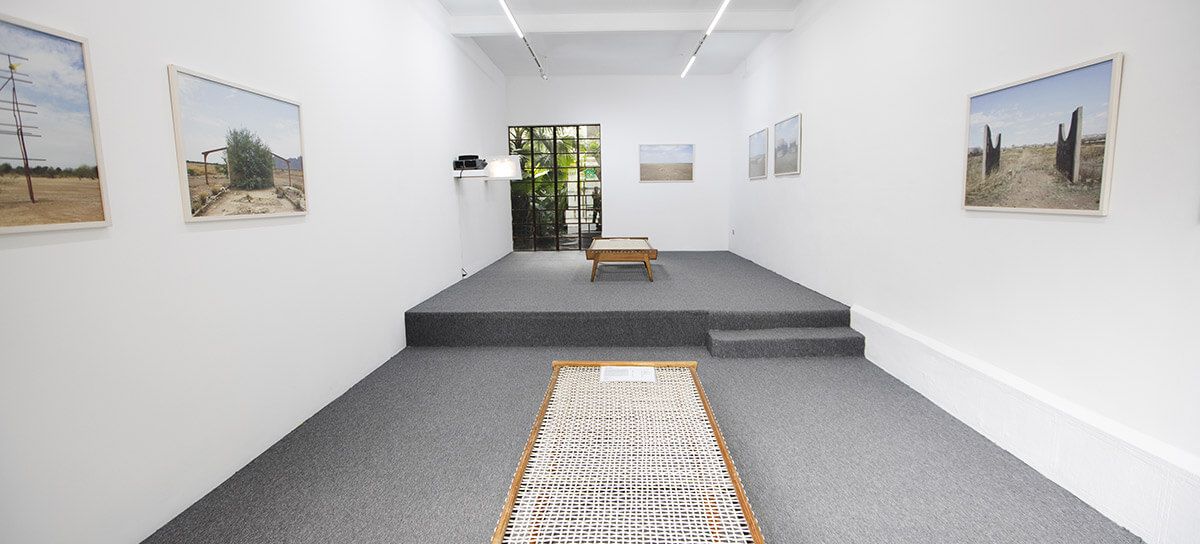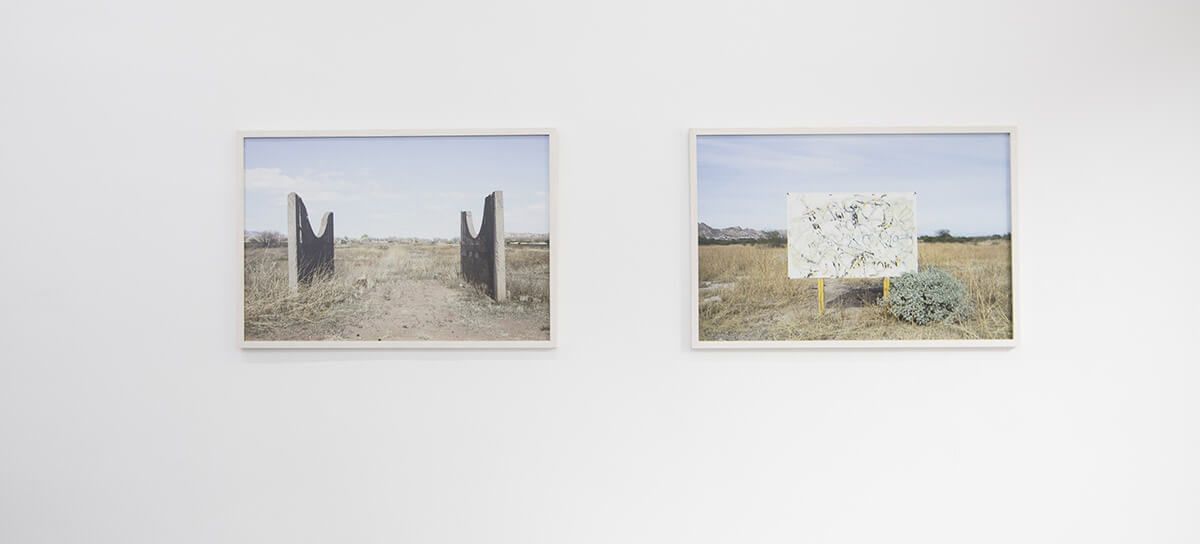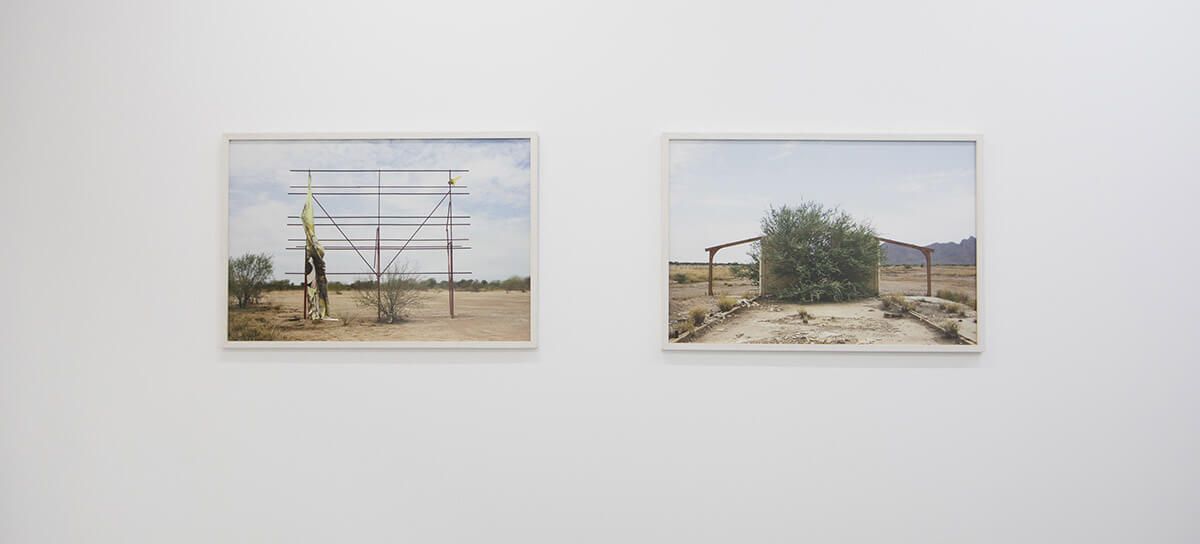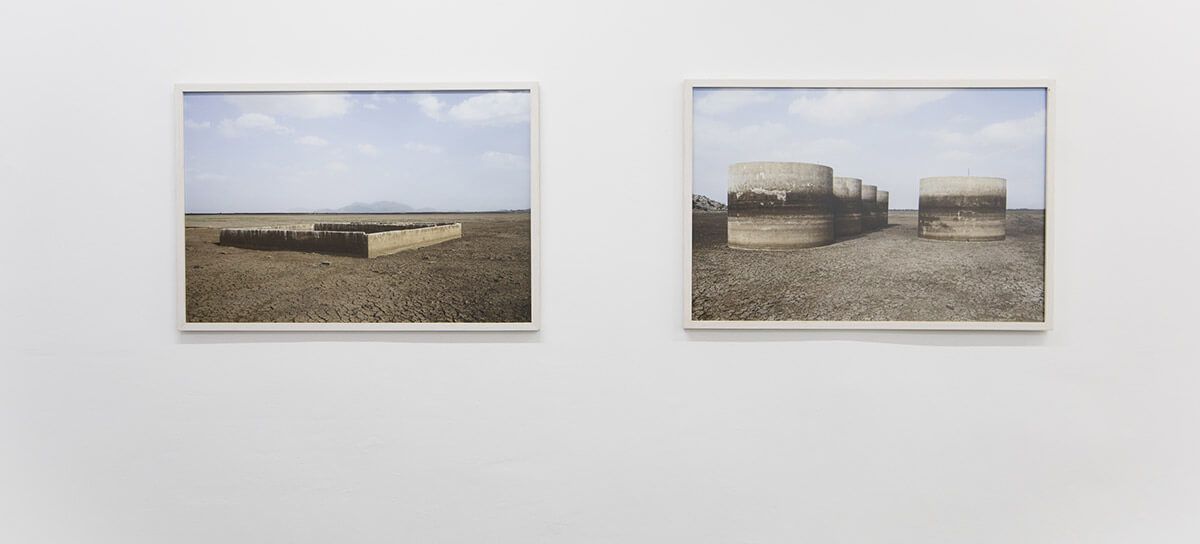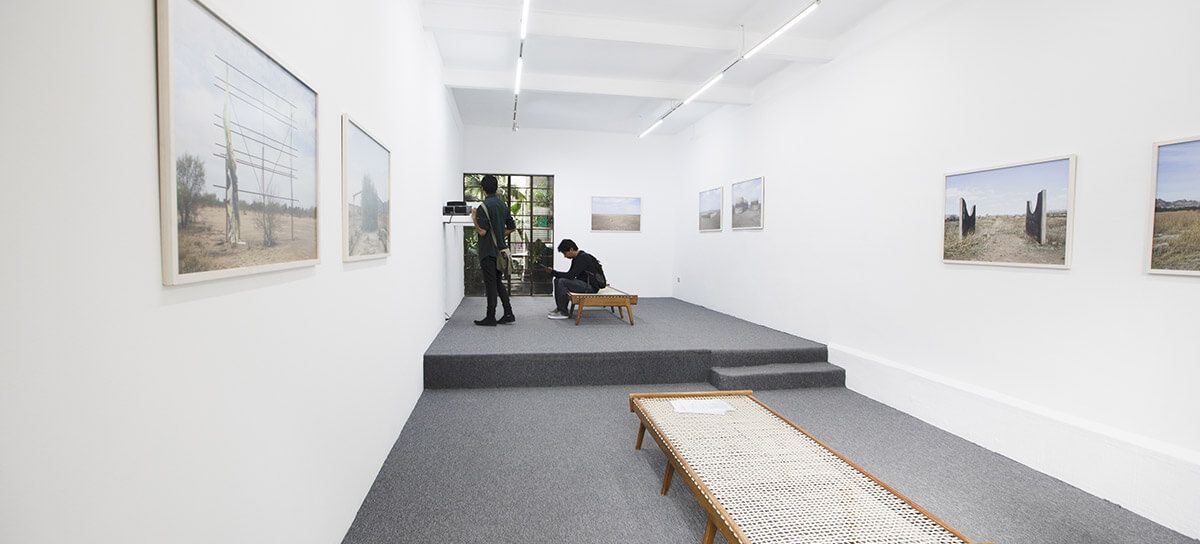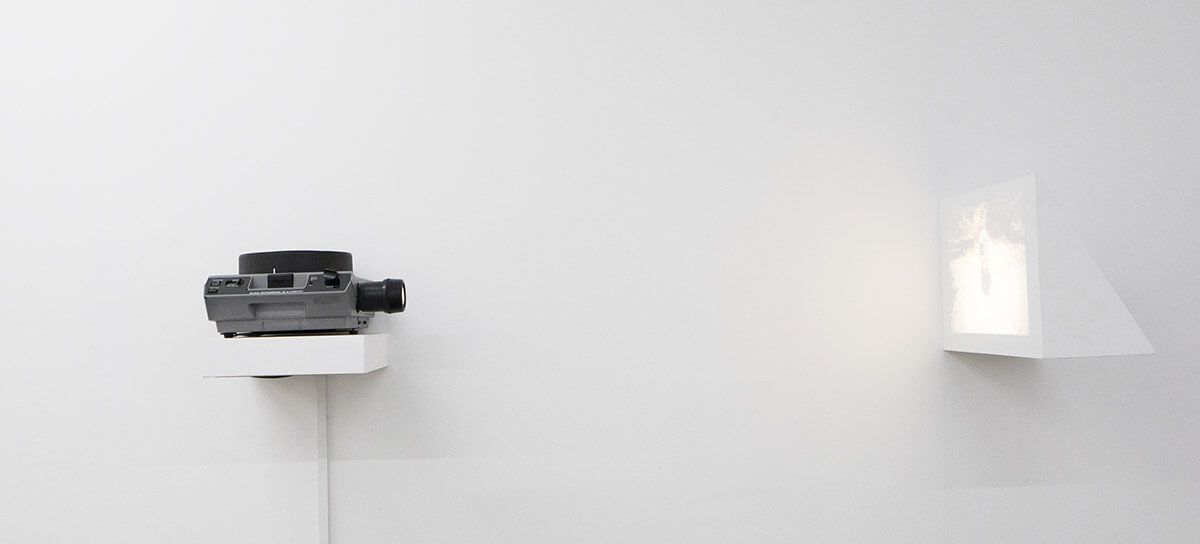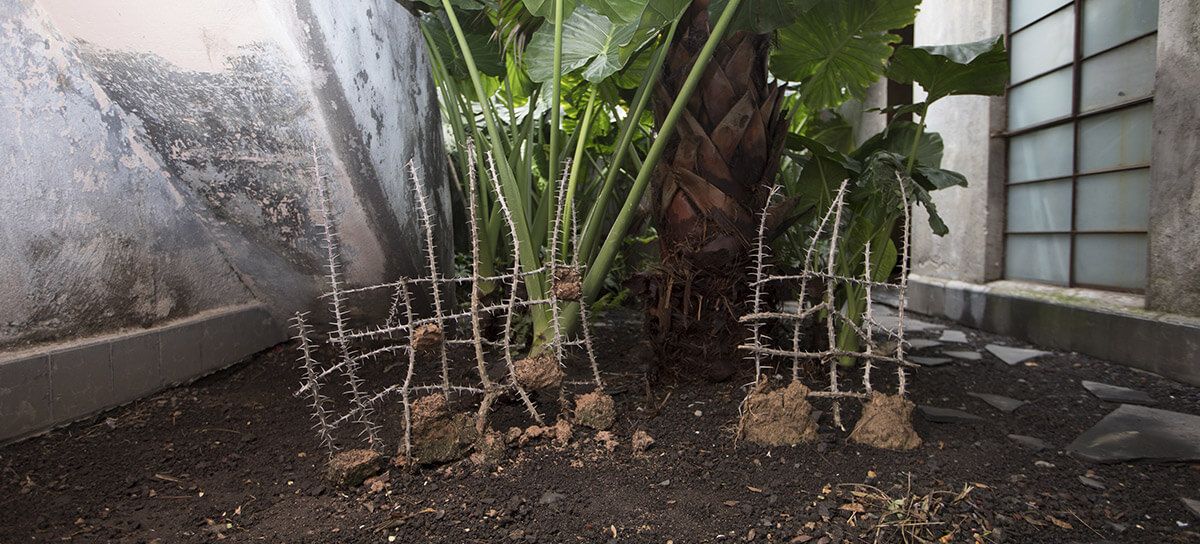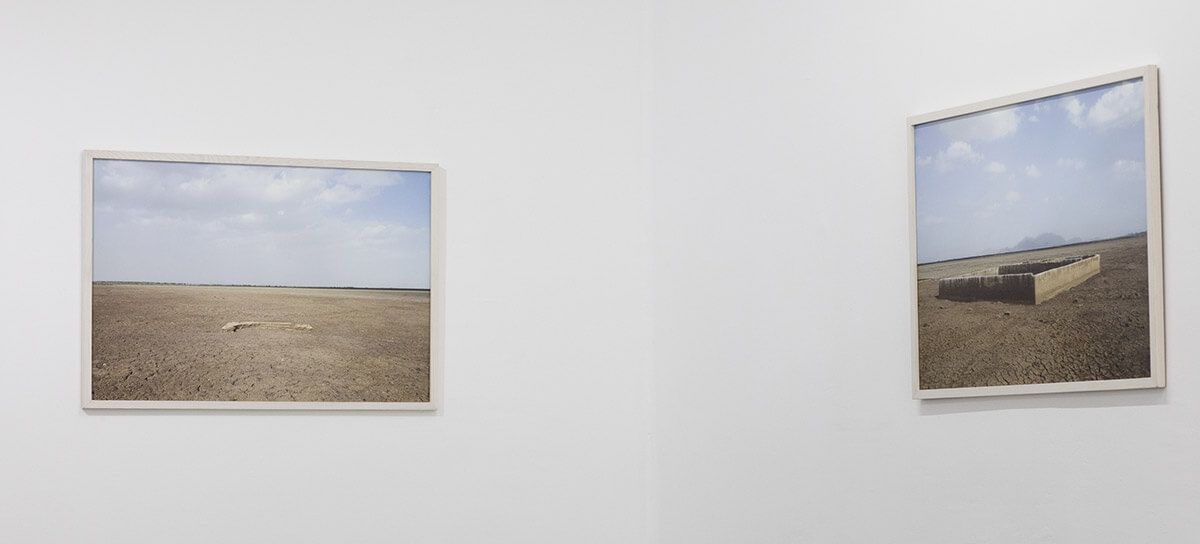Anodino
Carlos Iván Hernández
9 de agosto al 14 de octubre
Carlos Iván Hernández (Hermosillo, 1984) practice is based on personal explorations and journeys around his working environment, transforming his discoveries into objects of study that reveal major problems such as violence, the construction of social values in the northern states of the country and the consequences of forced migration.
Anodino is an exhibition made out of 7 printed photographs and 20 transparencies from the Despojo (Plunder) series, which were taken between 2010 and 2015. Each one of the images depicts a series of objects that were found during his multiple trips around his home state, Sonora, shown without any physical intervention. These elements merge with the landscape without any narrative that affects their environment. However, each landscape and its respective components create a multiplicity of references to the many social phenomena that have emerged in the region in recent years and its political and historical relations with their environment.
By associating these constructions with the spatial and temporal context in which they were taken, the objects become the origin of references (not always precise or correct) that form the basis of the construction of contemporary history in the region and in the country. According to Magnolia de la Garza, “the images do not reveal their history or the reason for their presence, but they reveal a strange relationship between the landscape and the object”.
Each one of the photographic representations become “anti-monuments” that arise in banal contexts but that turn into instantaneous impressions of the political and cultural situations of their condition. The banality of its nature gives rise to a “monumentality” that, according to the artist Robert Smithson, makes us forget the future by arising against its epochs.
The desert is placed as the natural element that reabsorbs these objects stripping them of a functional sense: they are entropic objects. Likewise, the two sculptures that make up State of Nature continue with this discourse around the displacement and the economy of the construction materials that come from the environment: rods of ocotillo, clay, manure from cows and grass.
The pieces become registers of the multiple encounters between Hernández and the natural spaces modified by the irreversible transformations towards uniformity, as a result of political decisions of the last decades.
Curated by Alberto Ríos de la Rosa.
Anodino is an exhibition made out of 7 printed photographs and 20 transparencies from the Despojo (Plunder) series, which were taken between 2010 and 2015. Each one of the images depicts a series of objects that were found during his multiple trips around his home state, Sonora, shown without any physical intervention. These elements merge with the landscape without any narrative that affects their environment. However, each landscape and its respective components create a multiplicity of references to the many social phenomena that have emerged in the region in recent years and its political and historical relations with their environment.
By associating these constructions with the spatial and temporal context in which they were taken, the objects become the origin of references (not always precise or correct) that form the basis of the construction of contemporary history in the region and in the country. According to Magnolia de la Garza, “the images do not reveal their history or the reason for their presence, but they reveal a strange relationship between the landscape and the object”.
Each one of the photographic representations become “anti-monuments” that arise in banal contexts but that turn into instantaneous impressions of the political and cultural situations of their condition. The banality of its nature gives rise to a “monumentality” that, according to the artist Robert Smithson, makes us forget the future by arising against its epochs.
The desert is placed as the natural element that reabsorbs these objects stripping them of a functional sense: they are entropic objects. Likewise, the two sculptures that make up State of Nature continue with this discourse around the displacement and the economy of the construction materials that come from the environment: rods of ocotillo, clay, manure from cows and grass.
The pieces become registers of the multiple encounters between Hernández and the natural spaces modified by the irreversible transformations towards uniformity, as a result of political decisions of the last decades.
Curated by Alberto Ríos de la Rosa.

